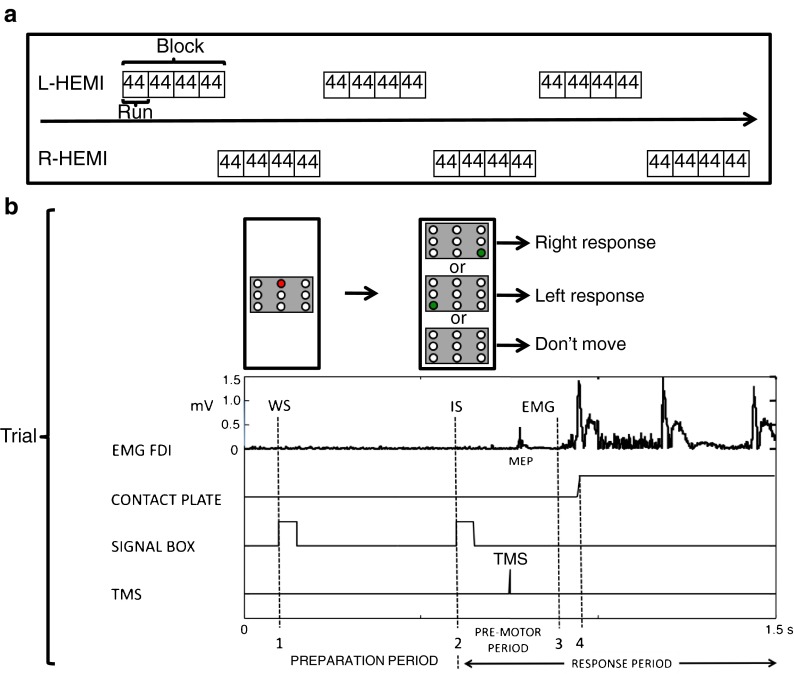Fig. 1.
Experimental protocol. a The experiment consisted of six blocks. Each hemisphere was exposed to three blocks in a counterbalanced (starting left or right) and alternating sequence. Before each block, excitability at rest was administered (baseline). A block consisted of four consecutive runs, whereas a run included 44 trials. In the right index finger movement (right response) and left index finger movement (left response) conditions (18 trials each), single-pulse TMS was delivered in the preparation period (at the warning signal [WS], at −400 ms, −300 ms, −200 ms, and −100 ms before the imperative signal [IS] and at the IS) and in the response period (at 50-ms intervals, until 500 ms after the IS). In the catch trial condition, TMS was only delivered in the preparation period (six trials). Each run contained two trials (left response and right response) without TMS. b For a single trial, signals (signaling box, TMS pulse onset), muscle activation (EMG), and movement responses (contact plates) are visualized in a 1.5-s time frame. The preparation period which lasted 500 ms was defined as the time elapsing between the onset of the warning signal (WS, Point 1) and the onset of the imperative signal (IS, Point 2). In the response period (starting from Point 2), premotor time (PreMT) was defined as the time between the onset of the imperative signal and the time of onset of voluntary EMG in the FDI muscle of the moving hand (Point 3). Reaction time (RT) was defined as the time from the onset of the IS to the liftoff of the index finger (Point 4). Motor time (MT) was defined as the time elapsing between the onset of the movement-related EMG activity and the time of the index finger liftoff (Point 4–Point 3)

